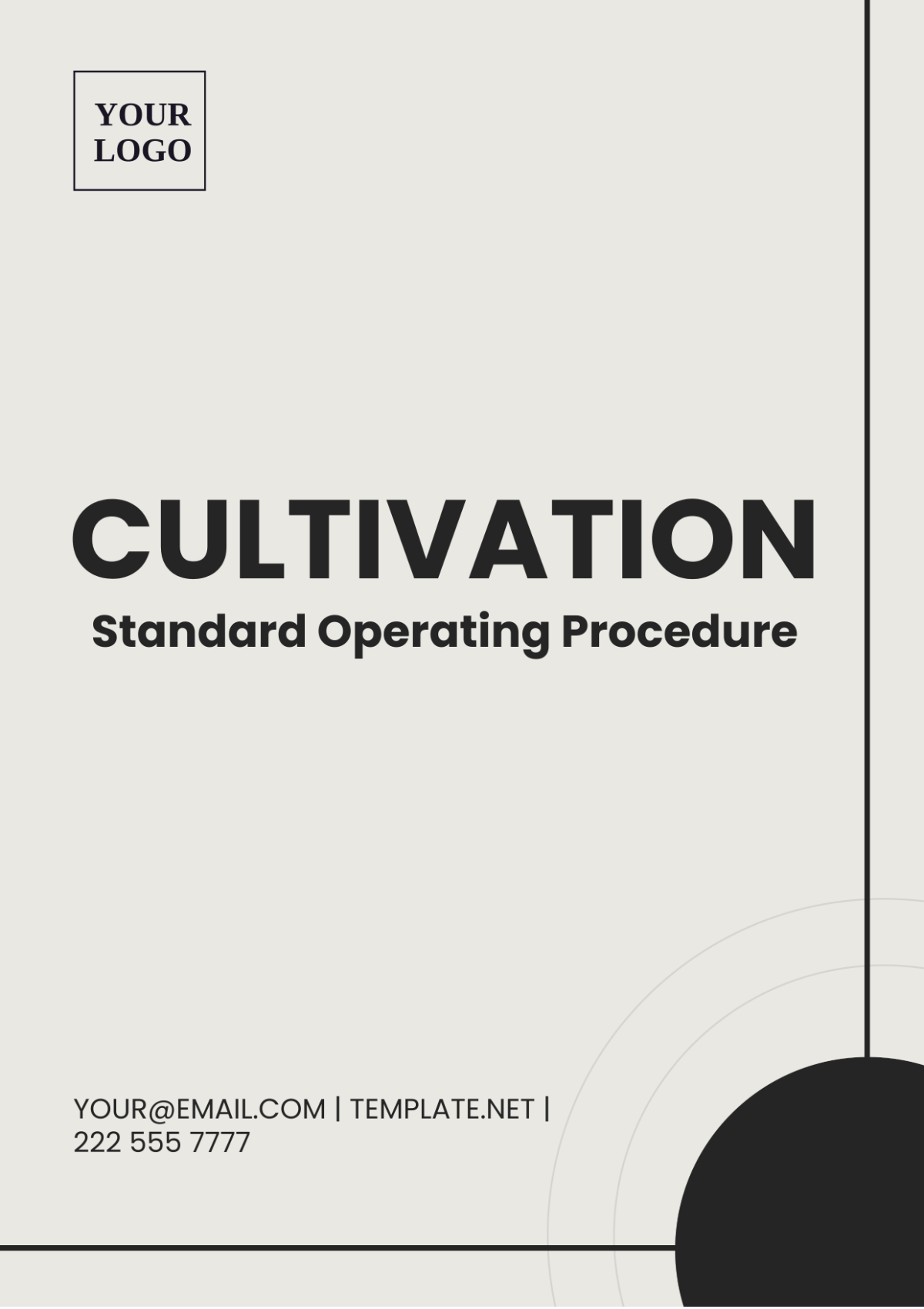Free Cultivation SOP

I. Objective
This Standard Operating Procedure (SOP) outlines the essential protocols and procedures for cultivating plants in the context of agriculture, horticulture, or plant-based industries, with a focus on ensuring consistency, quality, and compliance in all cultivation activities.
II. Scope
This SOP applies to all personnel involved in plant cultivation activities within [Your Company Name]. It encompasses all stages of plant growth, from propagation to harvesting.
III. Responsibilities
Farm Manager: Responsible for overall supervision and coordination of cultivation activities.
Growers/Field Workers: Responsible for executing cultivation tasks as per this SOP.
Quality Control Personnel: Responsible for monitoring and ensuring adherence to quality standards.
IV. Procedure
4.1 Planting
Select appropriate planting materials based on crop requirements and quality standards.
Prepare planting beds or containers with suitable soil mix and ensure proper drainage.
Plant seeds or seedlings at recommended spacing and depth as per crop guidelines.
Label each planting area with crop type, variety, and planting date for tracking purposes.
4.2 Watering
Determine watering schedule based on plant species, growth stage, and environmental conditions.
Use appropriate irrigation methods (e.g., drip, sprinkler) to provide adequate moisture without waterlogging.
Monitor soil moisture regularly and adjust the watering frequency as needed.
4.3 Fertilizing
Conduct soil tests to assess nutrient deficiencies and pH levels.
Apply fertilizers (organic or synthetic) based on soil test results and crop nutrient requirements.
Follow recommended application rates and timing to avoid nutrient imbalances or leaching.
4.4 Pruning
Regularly inspect plants for diseased, damaged, or overgrown parts.
Use sterilized pruning tools to remove unwanted growth or improve plant structure.
Dispose of pruned materials properly to prevent disease spread.
4.5 Pest and Disease Control
Implement integrated pest management (IPM) strategies to minimize pesticide use.
Monitor plants for signs of pests or diseases regularly.
Use biological controls, cultural practices, or approved pesticides as necessary.
4.6 Harvesting
Determine optimal harvest time based on crop maturity indicators (e.g., fruit color, seed size).
Harvest crops using appropriate tools and techniques to avoid damage.
Sort and pack harvested produce according to quality standards and market requirements.
4.7 Record Keeping
Maintain detailed records of cultivation activities including planting dates, inputs used, and yield data.
Document pest and disease occurrences, treatments applied, and outcomes.
Keep records organized and accessible for inspection and analysis.
V. Quality Control
Conduct regular inspections to ensure adherence to this SOP and quality standards.
Address deviations promptly and implement corrective actions as necessary.
Continuously improve cultivation practices based on feedback and data analysis.
VI. Safety and Environmental Considerations
Provide training on safe handling of tools, equipment, and chemicals.
Use personal protective equipment (PPE) as recommended for specific tasks.
Minimize environmental impact by adopting sustainable cultivation practices.
VII. Training
Provide training to all personnel involved in cultivation on the contents and implementation of this SOP.
Conduct refresher training sessions periodically to reinforce best practices.
VIII. Approval
This SOP is approved by:

[Approver’s Name]
[Approver’s Role]
[Approval Date]
- 100% Customizable, free editor
- Access 1 Million+ Templates, photo’s & graphics
- Download or share as a template
- Click and replace photos, graphics, text, backgrounds
- Resize, crop, AI write & more
- Access advanced editor
Discover the Cultivation SOP Template on Template.net—an essential tool for optimizing cultivation processes. This editable and customizable template empowers users to tailor Standard Operating Procedures (SOPs) for specific cultivation needs. With our AI Editor Tool, effortlessly make modifications to suit your requirements. Enhance efficiency and consistency in cultivation operations with this user-friendly template. Optimize your cultivation practices today!





























